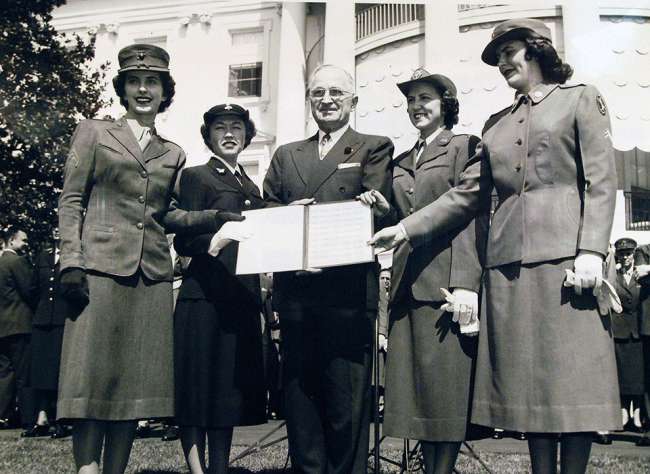Top Image: Bergen Belsen at the liberation: Members of at least one German Sinti family recognized themselves in this photo. Courtesy of the German Federal Archives.
Members of Romani groups suffered persecution and victimization all over Europe in the 1930s and 1940s. Known as “Gypsies”—Zigeuner, zingari, tsiganes, cigany, Cikáni, ţigani…—to outsiders, the people who called themselves Roma, Sinti, and Manouches (among others) were declared to be of alien blood under Germany’s Nuremberg Laws and suffered under the same genocidal regime as Europe’s Jews. At the end of the war and in its aftermath, however, their experiences were quite different.
“…to start dealing with the Gypsy problem on the basis of their racial character…”
Heinrich Himmler, 1938
In Nazi Germany, its occupied territories and its allied states between 1935 and 1945, Romani groups—who were already subject to a long history of discrimination—experienced forms of intensified harassment, internment, exploitation, and persecution, culminating in mass murder. Campaigns of cultural and physical genocide all over Europe led to the deaths of hundreds of thousands and the blighting of the lives of many more. Existing data confirm that of those living in Greater Germany in 1939, about 70 percent of German, 80 percent of Austrian, and as many as 90 percent of Czech Sinti and Roma perished. Of territories subject to German occupation and domination, Poland lost around 45 percent, Ukraine 75 percent, Estonia 90 percent, Latvia 60 percent, and the remaining Soviet Union 35 percent of their Romani populations as a direct result of the persecution.
New research, particularly in Eastern European archives, is continuing to identify new victims.
If we are still uncertain about the overall numbers of victims, that is partly because of the wide variety of forms that the persecution took. In Germany itself (including Austria from September 1938), the first internment camps for “Gypsies” were set up by local governments as early as 1935. Branded a priori as criminal, hundreds of men were sent to concentration camps like Sachsenhausen, Buchenwald, and Dachau during campaigns against the “work-shy” and “antisocial” in 1937 and 1938.
A significant number of them remained in the camp system for the next seven or eight years, dragged from one camp to another; many died there. In late 1938, Himmler ordered that the “Gypsy problem” be dealt with “on the basis of their racial character.” Sinti and Roma were excluded from schools; traditional occupations—peddling, horse trading, fortune telling—were criminalized, and they were subject to forced labor.
At the outbreak of the war they were prohibited from leaving their places of residence, and in separate actions in 1940 and 1941 about 5,000 were deported to labor camps and ghettos in Poland. At the end of 1942, Himmler ordered that all “Gypsies” be sent to Auschwitz. In the Czech lands incorporated into the Reich in 1939, local gendarmes managed two concentration camps for Roma (Lety and Hodonin), from which the inmates were deported to Auschwitz in 1943-44. Similarly, “Gypsies” in Belgium and the Netherlands fell victim to deportation to Auschwitz under the German occupation.
For Sinti and Roma, Auschwitz involved particular kinds of trauma. On Himmler’s orders, none were killed on arrival and they were held as families in a special section of Auschwitz-Birkenau. Before the camp was closed at the beginning of August 1944, with the gassing of some 4,000 remaining prisoners, most had already died of disease, hunger or exhaustion, or been murdered by guards. Others were selected for slave labor and returned to Germany, often passing through three or four concentration camps and enduring death marches before the liberation. For many, Bergen Belsen was their last stop.
Having to watch the misery and death of close family members, including small children (about 200 of whom were born in the camp) was remembered by survivors of Auschwitz as particularly traumatic, as was the total reversal of the gender and generational norms and the brutal denial of the conditions for hygiene, mutual respect, and honor that defined traditional Romani family life.
As a relatively young population, the inmates of the so-called “Gypsy Family Camp” were also preferred subjects for the “medical” experiments of Josef Mengele, whose infirmary was immediately adjacent to their camp. But in other concentration camps, too, “Gypsy” men and women were selected for experiments with new drugs and procedures. These included new (and painful and dangerous) methods of sterilization, in pursuit of a more swift and efficient way to carry out a programme of sterilizing “racial undesirables” that was already being deployed against “Gypsies” from the mid-1930s.
Auschwitz has become symbolic of the Romani Holocaust experience (as it is of the Shoah), and the victims are now commemorated internationally on August 2, the date of the “liquidation” of the “Gypsy Family Camp.” But only a fraction of the Romani genocide victims died in Auschwitz. On the Eastern Front and in occupied Poland and the Soviet Union, “Gypsies” were hunted down and massacred by the Einsatzgruppen, death squads that accompanied the German armies, or fell victim to mass killings alongside Jews; several hundred Roma from around Kiev died at the notorious massacre site of Babi Yar, for example.
Fascist regimes that were allies or clients of Nazi Germany implemented their own measures. In the puppet Slovak Republic, “Gypsies” were subject to escalating persecution that left them isolated and impoverished, although no form of internment or deportation was introduced; some fell victim to German reprisals against suspected partisans late in the war. Croatia is notorious for the Jasenovac concentration camp in which some 20,000 Roma were detained and murdered alongside Serbian and Jewish prisoners.
Romanian Roma commemorate the deportation of 25,000—including the whole of the itinerant Roma population—to the eastern territory of Transnistria. There they were held under horrific conditions between 1942 and the fall of the Antonescu dictatorship in August 1944; nearly half died of cold, hunger, disease and at the hands of local police. In France, “nomads” (the administrative term for Romani and other itinerant groups) were placed under police supervision at the beginning of the war.
After France fell in June 1940 and the northern part of the country was occupied by the German army, internment for all “Gypsies” was ordered in the occupied zone; at least 95, and likely more, were subsequently sent to concentration camps in Germany, and 144 were deported to Auschwitz in January 1944. The Vichy government, which administered the unoccupied zone, adopted the same policy of internment; in this zone “nomads” were spared deportation, but overall some 350 died of cold and disease in the French camps. Fascist Italy adopted a similar policy of “immobilization,” requiring “Gypsies” to remain at fixed locations under police supervision and, with the outbreak of the war, establishing camps in which they were interned. A still unknown but relatively small number of Italian Roma fell into the hands of the Germans following the German occupation in 1943.
“First there was this liberation, that was something, you were glad, you were free […] A few weeks later, the sadness returned.”
Bertha Weiß
In every country there were those who were able to avoid or evade internment, some through flight or in hiding and some because of loopholes in the regulations or gaps in the police net. But when the war ended in the spring of 1945, Europe’s Roma were scattered, exhausted, and traumatized. Families had suffered the death or disappearance of loved ones and whole communities had been destroyed. What happened next varied from country to country, as had the patterns of persecution.
In France, for example, the interned “nomads” were held in the camps and many were not released until June 1946. New research has revealed the participation of Romani men in the French Resistance, but also a shameful story of victimization after the liberation, by neighbors and Resistance activists who “naturally” suspected them of collaboration. Survivors of the Auschwitz “Gypsy Family Camp” were liberated from concentration camps in Germany along with Romani men and women who had survived the war in those camps.
The typical trajectory of Jews and foreign forced and slave laborers in 1945 went through the refugee centres and Displaced Persons (DP) camps operated first by the Allied armies and, from October 1945, by the United Nations Relief and Rehabilitation Organization (UNRRA—later the International Refugee Organization / IRO). However, very few Romani survivors were “displaced” in a legal or even geographical sense. The majority of Romani survivors on German soil were themselves natives of Germany or of the Austrian and Czech territories incorporated into the Reich. As such they were not far from home, although even before the war the German authorities had often questioned their German citizenship and many found themselves formally stateless after the war. These Roma and Sinti qualified as refugees, and would have a fight to reclaim their citizenship rights in the following years, but they had yet to learn that. German Sinti and Roma liberated from camps in Poland also made their way back to Germany as directly as they could.
Similarly, most Italian Roma, slowly released from internment after the fall of Mussolini in 1943, simply fled to rebuild their lives on home soil. For many, their situation was complicated by two circumstances: Italian governments had always denied the existence of Italian “Gypsies,” so that they were legally presumed to be foreigners. Moreover, a significant number of them had lived in Croatian border areas that were handed over to Yugoslavia after the war, and they were caught up in complicated arrangements for re-assigning citizenship and facilitating cross-border migration. For some of them, the changes made it possible to claim refugee status.
A relatively small proportion of Romani survivors presented themselves to the UNRRA/IRO seeking support and resettlement in the immediate post-war period—between 500 and 600 in all in Germany and Italy. Although the official attitude to them was ambivalent—sometimes recognizing them as a victim group and sometimes questioning whether “nomadic” families could be genuinely seeking resettlement as refugees—they were relatively successful.
Once the camps were opened, German Sinti and Roma typically set off for home as soon as they could. Otto Rosenberg, aged 17 in 1945, was one of the many liberated from Bergen Belsen who decided in the first days after the arrival of the British troops to leave the camp and make their way home; Rosenberg simply did not trust either the Germans or the liberators and could not bear to be surrounded by fences any longer. Making his way to Berlin on foot, the first place he went to on arrival was his last address in Berlin: the Marzahn “Gypsy Camp” where his family had been interned in 1936.
“We don’t ride trains with the Germans anymore, Mama said. Even if we have to walk all the way home.“
Hugo Höllenreiner
Heading home on one’s own or with a small group of fellow survivors had its hazards. In the spring of 1945, fighting was still going on, and one Sinto’s 280-mile journey on foot from a camp in Saxony to his home village in Southwestern Germany (some of it barefoot) took him back and forth across a still active front line. Once the shooting had ended, relations with the occupying troops had to be negotiated; they had the upper hand and their reactions to German civilians travelling across the country were unpredictable.
In these early months it was not always understood what the concentration camps had been, still less that “Gypsies,” like Jews, had suffered in them solely because of who they were. For women, like Lily Franz who had escaped from a death march and made her way to a refugee clearing centre in Czechoslovakia, the threat of sexual violence and exploitation was always in the background, irrespective of which army was in charge. Sometimes the only way out of a tight spot was to play on other people’s notions of and sympathy for “Gypsies” by offering to sing and dance.
”… hoping to find our relatives again…”
Ceija Stoika
Many of those liberated in 1945 were very young, having been interned and deported as children. Mano Höllenreiner arrived in Auschwitz at the age of eight. Transported to Ravensbrück concentration camp near Berlin in the autumn of 1943, and then Sachsenhausen, he was among some 300 children separated from their families and moved to another camp in early 1945. Barely able to walk and unable to remember his name or identity, he was taken under the wing of French prisoners, with whom he travelled to France where he was eventually placed with foster parents. For his own protection, he had to hide all evidence that he was German, including his native language—a situation which left lasting psychological scars. Once he could remember his name and some details of his family, the Red Cross International Tracing Service (ITS) was able to return him to his parents at the beginning of 1947.
Not all Romani families were reunited so swiftly, partly because in those early years they lacked the connections and the resources to mobilize agencies like the ITS. What they did was to rely on old and new networks of fellow Romani survivors. Reinhard Florian, a Sinto from East Prussia, saw his first concentration camp in 1942 at the age of 19. He was liberated from the seventh, Ebensee in Austria. He settled in Bavaria (Southern Germany), because he had learned from other survivors where he could get help with housing and employment, and also that East Prussia was now occupied by the Russians. And he also assumed that none of his family had survived. In 1948, he learned in conversation with another Sinto that his half-brother was alive and living in the same town, but more than 20 years passed before the brothers were able to make contact with their father in East Germany.
“It got worse when we learned that out of the 27 houses that used to form our village, only four were left.”
Josef Jelínek
The decision to head home often led to painful and conflictual situations, since even “at home” Sinti and Roma had often been unwelcome neighbors. Returning Germans found that their caravans (if they had them) and other property had been confiscated and destroyed or handed over to “Aryans.” Members of the Höllenreiner family returned from Bergen Belsen to the Deisenhofenerstraße in Munich where they had lived and dealt in horses before the war, but the local police refused to displace the new residents. They shared a shack on a nearby lot until the father of the family returned and reclaimed the house by physically ejecting the usurpers.
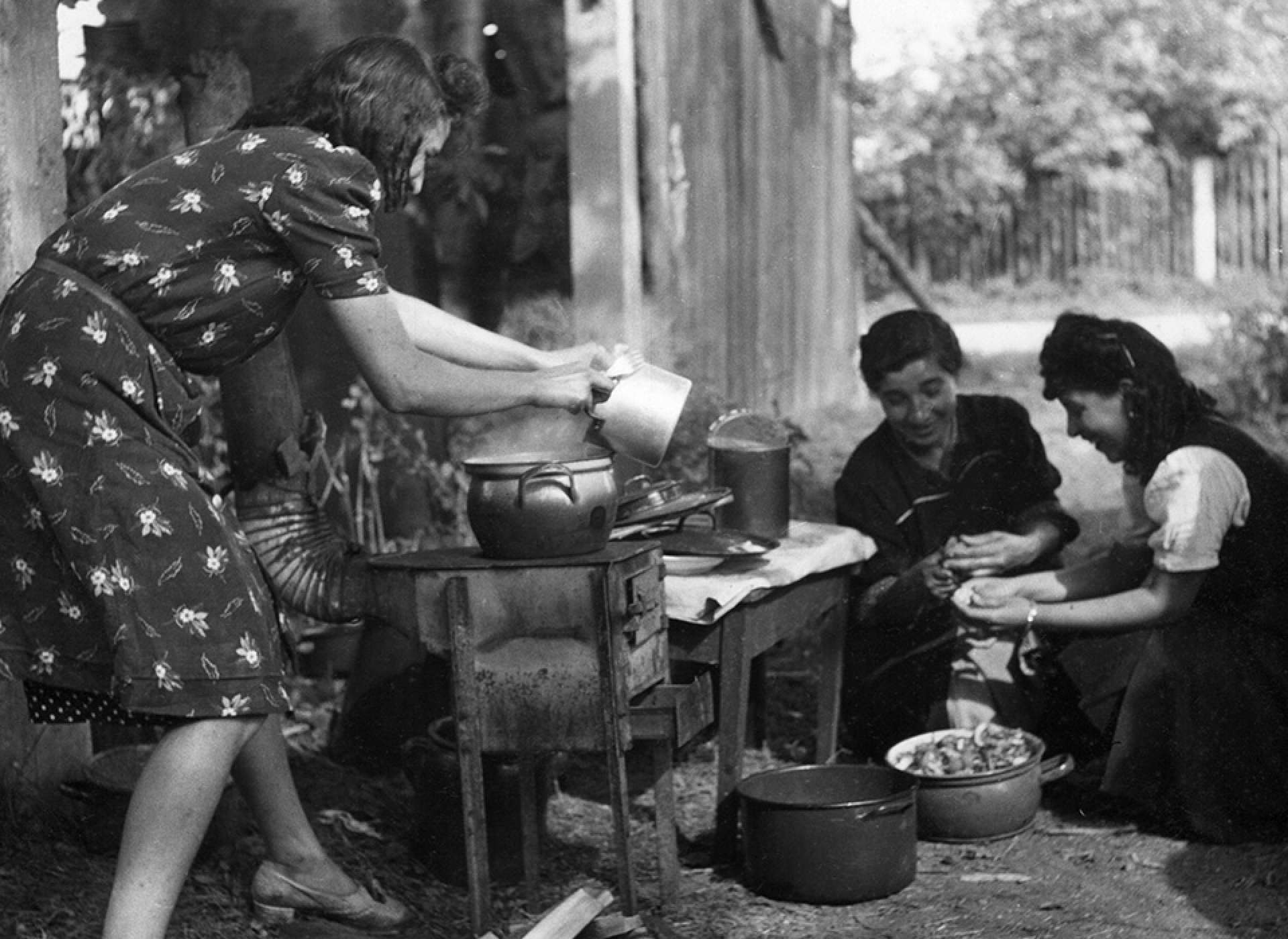
Returned Sintezzas in the Deisenhofenerstraße Munich 1946. Courtesy of
Süddeutsche Zeitung via Alamy.
In southern Moravia (Czechoslovakia) in the summer of 1945, the return of a handful of Romani families prompted five local mayors to protest that “in spite of all the suffering they endured, most of them have not changed for the better: work-shy, thieving, etc.”; they recommended resettling the survivors in a border area, “where they could be set to work under surveillance.” In German towns they were often assigned to sites on the outskirts where they camped or were housed in emergency barracks—and where they remained for generations after the post-war emergency was past. Mario Franz, who grew up in the Papenhütte settlement in Osnabrück in the 1960s—where “Gypsies” had already been interned before the war—describes it as “our ghetto.”
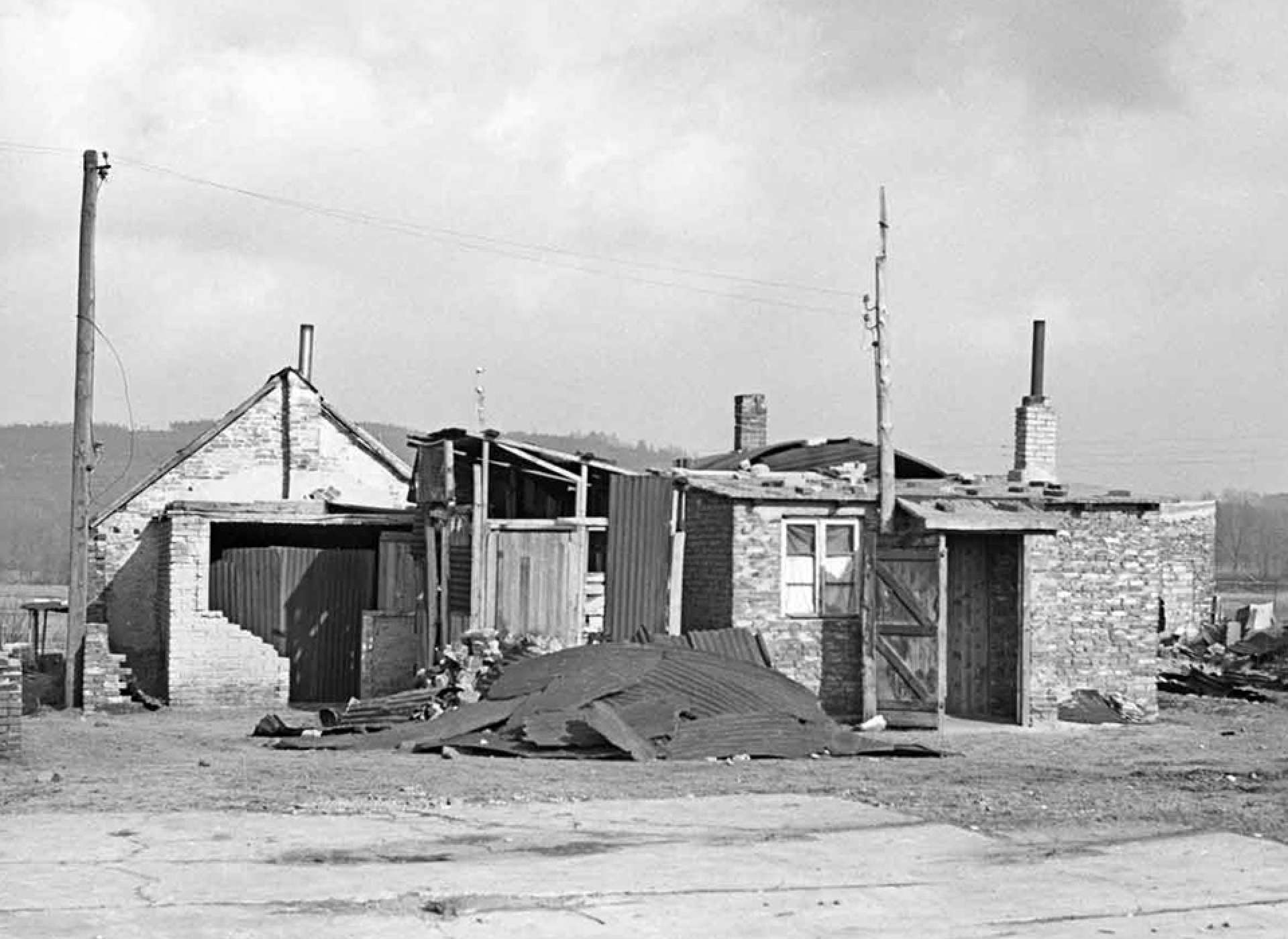
The Papenhütte settlement in Osnabrück ca. 1955. Courtesy of the Lower Saxony State Archives.
In Romania, deportees who had returned from Transnistria in late 1944, some even earlier, faced similar problems. Those who had been settled before the war sought out their old homes, some of which they had sold at knock-down prices to their neighbors when they left, and others which had been confiscated by the government. Hardly any were able to reclaim them. Itinerant Roma travelled to the villages which they had frequented or to large towns, often settling on the outskirts. Many attest to having been assisted by local Romanians, who in some cases had known them before the war. But as the war drew to an end, the economic constraints and limitations on mobility that continued in peacetime made it impossible for them to continue with their historic trades, making and selling small household items. The large family groups which had travelled together before the deportation were decimated, never to be reconstituted.
“Rejected: Policy not to grant Resettlement Services to Gipsy.”
IRO Eligibility Officer
While emigration was an important route to a new life for many Jews in post-war Europe, it was less of an option for Romani survivors, even if they had lost all ties or their circumstances meant that simply going back home was unrealistic. The prejudice against “Gypsies” was global, and families who sought emigration through agencies like the UNRRA/IRO were sometimes turned away as undesirables. Some Romani families did have transnational networks; there were Italian refugee families with links to Brazil. But there were fewer who, like some Jewish victims and survivors, had relatives abroad who could sponsor them, and there was no Romani equivalent to the international Jewish organizations that were able to support survivors and broker arrangements for mobility and compensation at the governmental level. Some succeeded on an individual basis of course; Lina Laubinger/Steinbach, liberated from Dachau at the age of 15, met an American GI in 1949, married and raised her family in Texas. But most had to make a new life among their former persecutors. Lina Jackson talks about her liberation from Dachau concentration camp on Youtube (German subtitles).
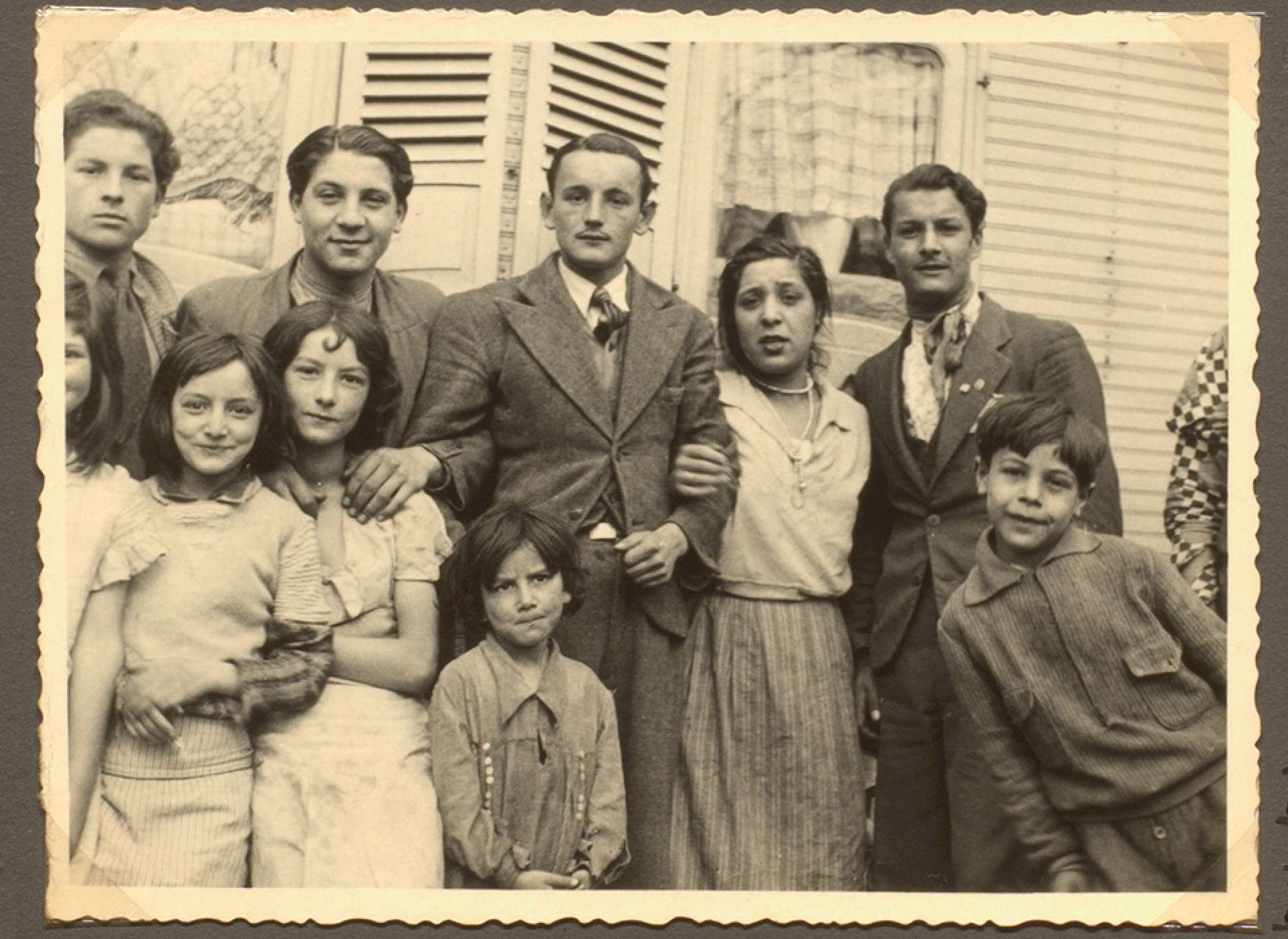
Lina Laubinger/Steinbach (centre), with her brothers and sisters in 1935. Courtesy of the University of Liverpool Library Special Collections
”People were talking about equality - and the Gypsies were still in the same place they were before.”
Ilona Lacková
In Germany, in the first months after the end of the war, local and regional offices were set up to identify and certify former camp inmates and victims of Nazi persecution. Those German Romani survivors who presented themselves were often recognized and issued the appropriate documents. In subsequent years, “they seem to have just been forgotten”—the words of Alfred Lessing, who had managed to survive and avoid internment in Germany at the cost of being constantly in hiding, disguised or on the run.
The newsletter of a small organization of Sinti founded in Munich in 1946 to press for recognition and justice was tellingly entitled Die Vergessenen (The Forgotten Ones), and the organization itself did not last long. But in fact some authorities very soon found ways of denying help to “Gypsies”; in 1946, the Bremen and Hannover governments made public support for Nazi victims dependent on evidence that they had a permanent job.
In the years that followed, Romani German survivors struggled to gain justice and compensation. The legal cases they brought against those who had collaborated in their persecution, and in particular the race scientists and medical experts who had condemned them to sterilization, internment, and murder, resulted in no convictions. Indeed the same experts were called on to testify that “Gypsies” were inherently untrustworthy witnesses.
Until 1963, the official position of the West German courts was that their racial persecution (the qualification for compensation) had only begun in 1942, with the deportation to Auschwitz. The harassment, exclusion, internment, sterilization, and slave labor that they had suffered before were all justified by their criminal and antisocial behaviour. And even when the legal position changed, their testimony was often not believed. Discriminatory regulations and police practices continued as though the genocide had never happened.
In other countries, too, the persecution of Roma was a non-subject. In France and Italy, even after internment ended, discrimination continued; as victims of the defeated fascists, the Roma were easily forgotten in national myths of anti-fascist resistance. It was only in October 2016 that French President François Hollande acknowledged national responsibility and apologized for the internment policy. In socialist Eastern Europe and the Soviet Union, national narratives of heroic resistance and ideologies of class struggle could not easily accommodate the ways in which the Roma had suffered simply for being Roma.
While the genocide of the Jews could not be denied, Romani victims of mass killings in Ukraine were simply “peaceful Soviet civilians” in official parlance. Socialist states were generally more ready to grant rights to Roma, and the drive for reconstruction provided work and upward mobility; many Slovak Roma migrated to the more industrial west of Czechoslovakia, replacing the decimated Czech Roma population. But this “integration” nearly always came at the price of the expectation that they settle down, often in segregated communities, and abandon their traditional ways of life.
This denial of their suffering, and delay of justice and compensation, has been described by Romani survivors as a second Holocaust. The reconstruction of the families and communities through which Romani groups defined their identity was burdened by the nature of the trauma they had suffered; sterilization, humiliation, and the insults to their culture made it hard both to share their stories and to communicate their traditions and values. The loss was all the greater as long as the wider society also kept silent about their history (while commemorating other victims and systematically prosecuting the perpetrators).
To a very considerable extent it was the mobilization of a new generation of Romani Germans in the 1980s, demanding acknowledgement of the genocide, that spurred the development international Roma rights movement. The culmination of their efforts was the recognition by successive German governments of the nature of their victimization and, in 2012, the opening of a Memorial to the Sinti and Roma of Europe Murdered under National Socialism in Berlin’s Tiergarten.
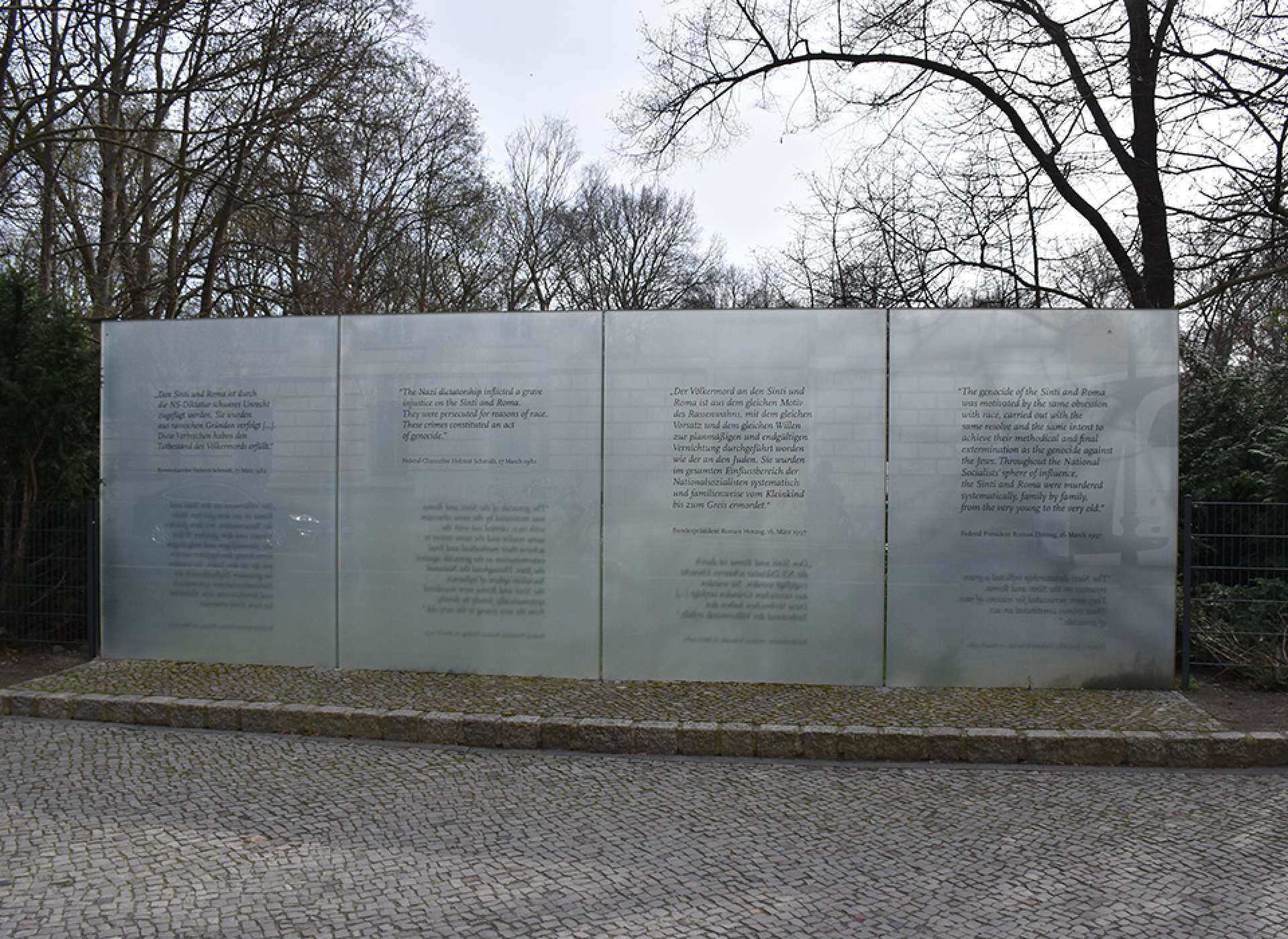
Memorial to the Sinti and Roma of Europe Murdered under National Socialism, Tiergarten Berlin—bearing official statements acknowledging the genocide. Courtesy of Vasatkya1 via Wikimedia Commons.
Meet the Author
Eve Rosenhaft is Professor Emerita of German Historical Studies at the University of Liverpool (UK). She has taught and published widely on aspects of German social history since the eighteenth century, and has collaborated with museums, film makers and theatre practitioners on projects about Romani and Black victims of Nazism. Recent and forthcoming publications include Black Germany: The Making and Unmaking of a Diaspora Community 1884-1960 (Cambridge, 2013); Legacies of the Romani Genocide since 1945 (London, 2021); European Roma: Lives Beyond Stereotypes (Liverpool, 2022). This article reflects some outcomes of the Academic Network Project “Legacies of the Roma Genocide in Europe since 1945” funded by the Arts and Humanities Research Council (AH/P007260/1, 2017-19) and of Eve Rosenhaft’s personal research in the context of the project BESTROM, financially supported by the HERA Joint Research Programme (www.heranet.info) which is co-funded by NCN, Academy of Finland, AHRC, AEI and the European Commission through Horizon 2020 (2019-22).
Further Reading
Adler, Eliyana R., and Kateřina Čapkova, eds. Jewish and Romani Families in the Holocaust and its Aftermath. New Brunswick NJ: Rutgers University Press, 2021.
Donert, Celia, and Eve Rosenhaft, eds. The Legacies of the Romani Genocide in Europe since 1945. London: Routledge, 2021.
Joskowicz, Ari. “Romani Refugees and the Postwar Order,” Journal of Contemporary History 51 (2016): 760-87.
Lacková, Ilona. A False Dawn. My Life as a Gypsy Woman in Slovakia. Hatfield: University of Hertfordshire Press, 2000.
Rosenberg, Otto. A Gypsy in Auschwitz. London: London House, 1999.
Weiss-Wendt, Anton, ed. The Nazi Genocide of the Roma. New York and Oxford: Berghahn, 2013.
This article is part of a series commemorating the 75th anniversary of the end of World War II made possible by the Department of Defense.
Cite this article:
MLA Citation:
APA Citation:
Chicago Style Citation:
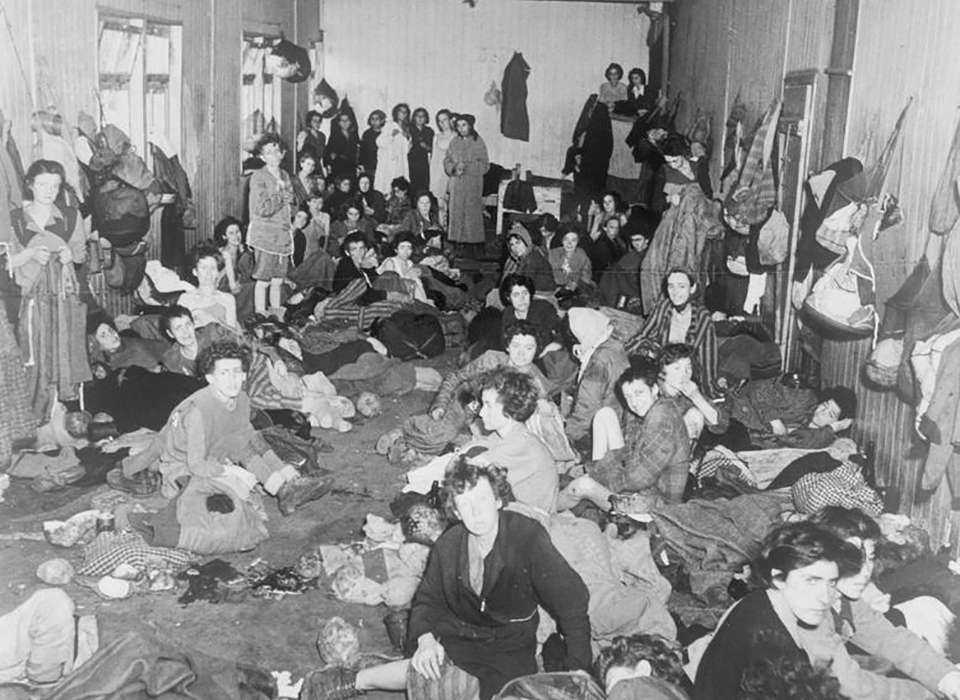



![Max Fuchs, New York City cantor, sings as Rabbi Sydney [sic] Lefkowitz, Richmond, VA, conducts the first Jewish services from Germany.](/sites/default/files/styles/max_650x650/public/2025-10/image1.jpg)


